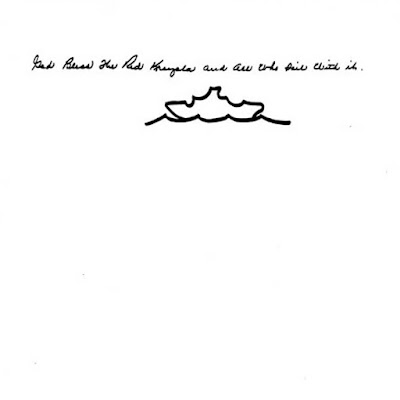
Screeching
into its 35th anniversary today is the one hit wonder from The
Timelords, aka Ford Timelord, aka The Justified Ancients of Mu Mu, aka
The KLF, aka Jimmy Cauty and Bill Drummond, with Doctorin’ The Tardis,
which was released on May 23rd, 1988. Roaring into the number one UK
single spot, it was a novelty record which helped set the stage for one
of the most notorious musical careers of the late 20th century.
The
Justified Ancients of Mu Mu were founded on January 1st, 1987 whereupon
they spent the next year pumping out a couple of LPs and a handful of
singles. Those had limited exposure and commercial success, though they
had more prominent legal troubles thanks to their unauthorized use of
copyrighted music from other artists. ABBA’s legal challenges
ultimately resulted in their debut LP ending up as a bonfire when courts
order the destruction of all remaining copies.
After that
rough startup Jimmy Cauty and Bill Drummond were looking to take a break
from The JAMs to clear their heads and regroup. They were looking for a
musical palate cleanser and something unabashedly accessible, rather
than the eccentric limited releases of The JAMs with Drummond’s strident
rapped social commentary. Initially, the idea was to make a dance
record, something grounded in the 4/4 disco beat being rehabilitated by
House music. Yet, as the fates would have it, their decision to pillage
1970s nostalgia drove their groove in a slightly different direction.
The
rhythmic bed they chose for their “hit single” was lifted from Garry
Glitter’s 1972 smash, Rock ’n’ Roll Parts 1 & 2. At first they
tried to fight against the song’s boogie-woogie, bump & grind swing
in order to shoehorn it into a more disco friendly rhythm, but after
three days of struggling, they came to realize that it was useless to
resist. Augmenting this groove with a bit of The Sweet’s Blockbuster,
they next spliced that rhythm with the sequencer driven pulse and sine
wave wail of the Dr. Who theme song. The whole thing was topped off
with a football chant style chorus, mindlessly repeating “Dr Who, The
Tardis”. It was an admittedly stupid juxtaposition, but something about
it seemed to work. It had a kind of rousing brutishness to it, though
inter-cut with a sci-fi sense of drama. The pair self-proclaimed their
new product, “probably the most nauseating record in the world”, adding
that "we also enjoyed celebrating the trashier side of pop”.
They
then set about creating a new alter-ego for their creation, based on
Cauty's 1968 Ford Galaxie police car. It had been featured in the cover
graphics for the second JAMs LPs, but was also Cauty’s regular ride,
which he dubbed, “Ford Timelord”. Rather than list Cauty and Drummond
on the single, the song’s creation was credited to the car, which was
prominently featured on the single’s cover. Cauty and Drummond were
only hinted at as “Lord Rock” (controls) and Time Boy (navigation) and
the duo claimed the car had issued instructions to them on how to create
the record. A music video for the single showed the car chasing
various cheaply made Daleks around the countryside, with sirens blaring
throughout.
Numerous formats for the single were produced
including CD Maxi Singles, 12” EPs, 7” singles and a special remix
featuring Gary Glitter on guest vocals. Of course, this was all before
Gary’s legal issues and conviction as a sexual predator. After its
release, it quickly climbed the charts until it hit the number one spot
in the UK, where it stayed for precisely one week. Critically, the
single was seen as nothing more than a bit of novelty pop trash. Melody
Maker described it as "pure, unadulterated agony ... excruciating”.
Yet its creators were entirely aware of the song’s nature and had
conceived it as a kind of tribute to the genre of novelty records.
After its release, they followed up the single with the publication of
“The Manual (How to Have a Number One the Easy Way”, a guide booklet to
chart success. The text meticulously laid out the entire process by
which one can compose, record, release and promote a number one single.
However, while such hubris might indicate a fool-proof methodology, the
fact is that the pair’s subsequent attempts at chart success were far
less successful.
Success did eventually come to them again after
they rebranded themselves as The KLF and began to issue a series of
singles, which became exemplars of so-called “Stadium House”. In the
early 1990s, these records achieved incredible chart success around the
world, including the US. They were considered the most successful group
of the era, topping it off with the massively successful White Room LP.
But then, just as mysteriously as they rose to fame, they abruptly
pulled the plug on their career, deleted their entire record catalogue
and vanished from the music industry, leaving behind only a hail of
blank bullets, a dead sheep and a pile of burnt money.















